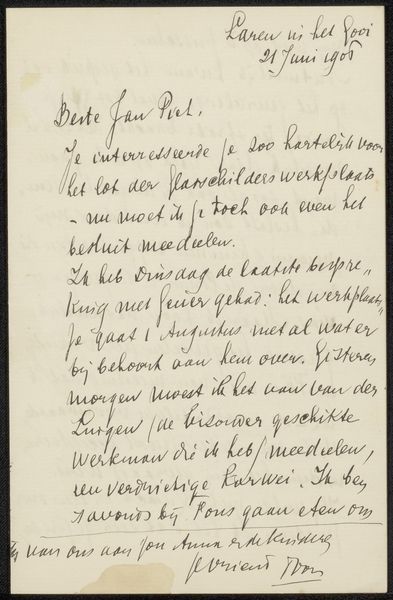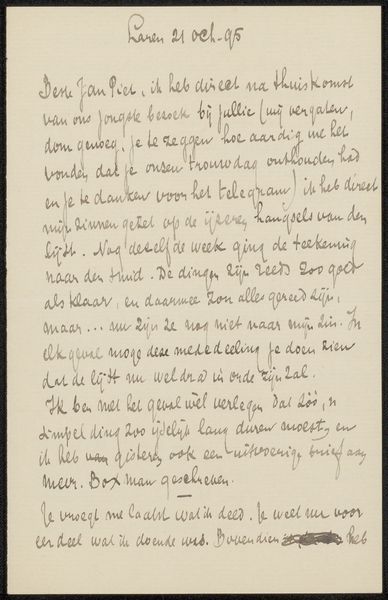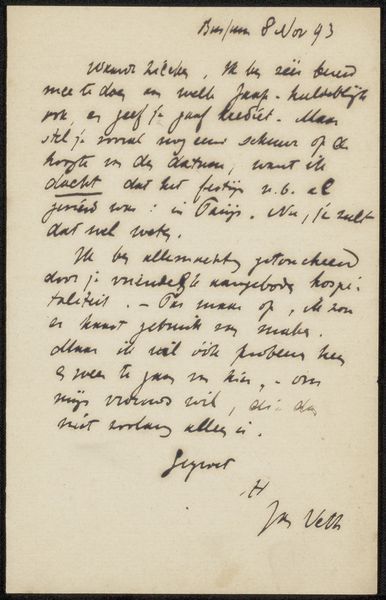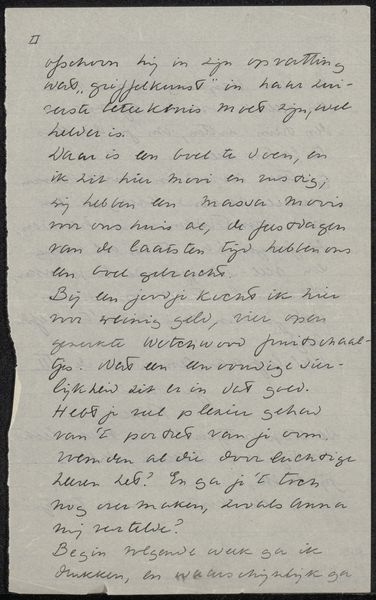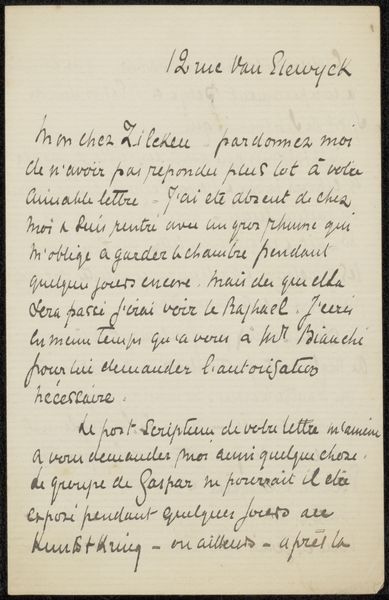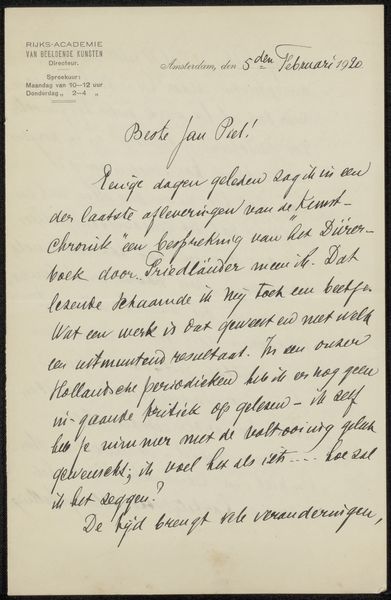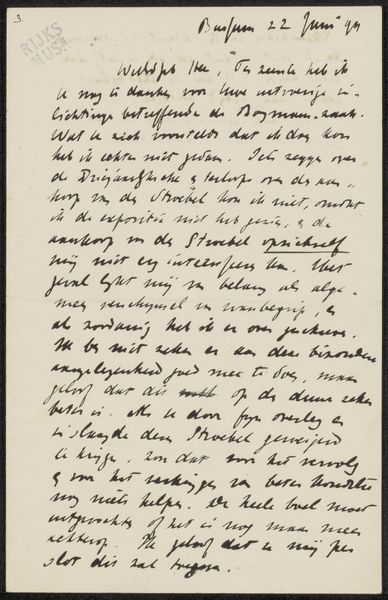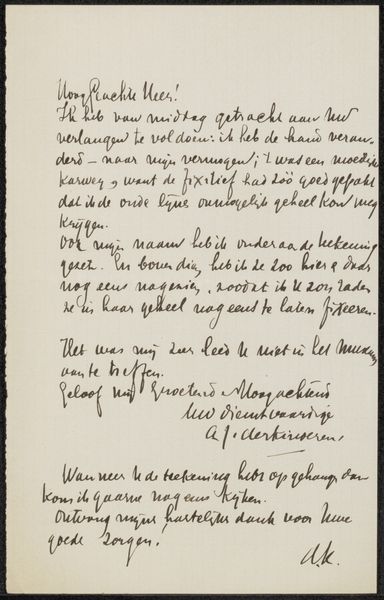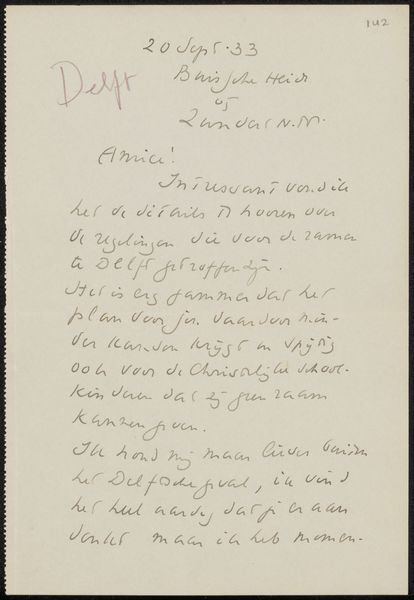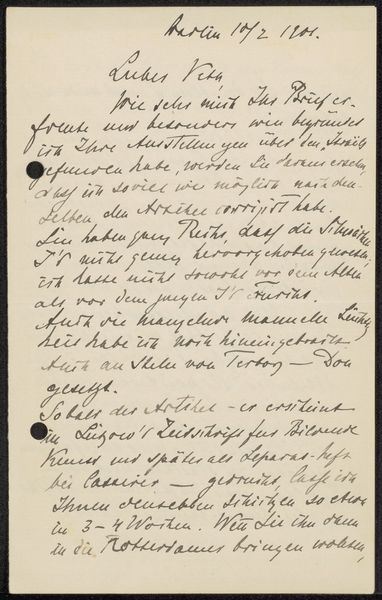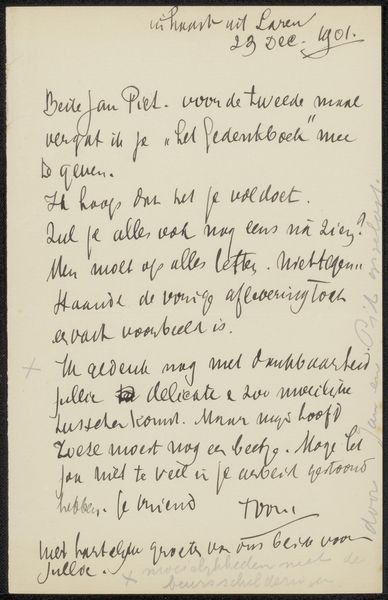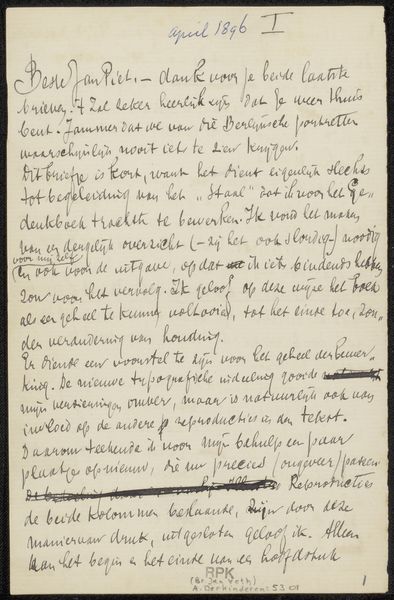
drawing, paper, ink, pen
#
drawing
#
hand-lettering
#
hand drawn type
#
hand lettering
#
paper
#
personal sketchbook
#
ink
#
hand-drawn typeface
#
ink drawing experimentation
#
pen-ink sketch
#
pen work
#
sketchbook drawing
#
pen
#
sketchbook art
#
modernism
Copyright: Rijks Museum: Open Domain
Curator: Before us is "Brief aan Jan Veth," a drawing potentially created between 1916 and 1923 by an artist affiliated with the Rijksakademie van Beeldende Kunsten. It appears to be a personal letter, rendered in pen and ink on paper. Editor: The flowing script gives it a rather intimate feel, doesn't it? It's not just informational; the handwriting adds personality and emotion. Curator: Indeed. The act of writing by hand, the choice of script – these were deliberate acts laden with social and personal meaning, reflecting status, education, and the nature of the relationship between sender and receiver. A printed document would convey something completely different. The imperfections, the varying pressure of the pen – these speak volumes. Editor: I’m drawn to how the ink almost seems to pool in places, giving a heavier visual weight to certain words or phrases. The darkness against the pale paper evokes a sense of the past, doesn't it? Letters hold within them their time and place. Curator: Precisely. A letter like this can be analyzed through the lens of correspondence theory, examining how it reinforces or subverts social norms. The opening salutation, the closing remarks—each element served a specific purpose. Also we could discuss this in line with access to type as a technology. Who had it, when, and what did it say about you. Editor: Looking at it, I am considering it is about congratulating Jan Veth becoming a grandfather. The references to the family resonate on a really deeply rooted level of imagery and ideas; what are the hopes and the role of the new generation. It gives you something optimistic and continuous even through a difficult or uncertain historical period, as well as creating these sorts of continuities between different times. Curator: Absolutely. Examining the text through a feminist lens, we might ask, whose voice is privileged here? Whose story is being told and from what perspective? Considering Anna’s involvement opens up questions about women's roles in early 20th-century society, even in supposedly personal correspondence. Editor: Thinking of Jan Veth specifically, there’s something here about artistic legacies. Curator: Absolutely. It shows just how rich and multi-layered a seemingly simple personal artifact can be. Editor: Indeed. A window into a past relationship between people, sure, but also between ourselves and history.
Comments
No comments
Be the first to comment and join the conversation on the ultimate creative platform.
